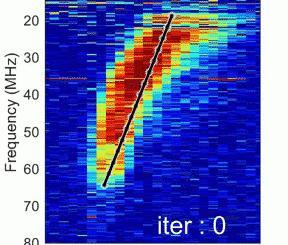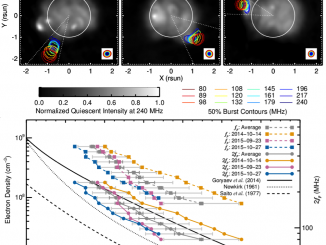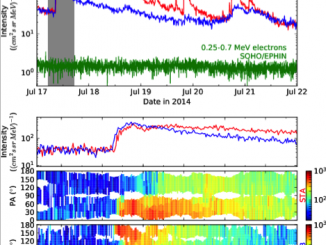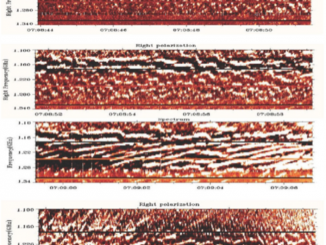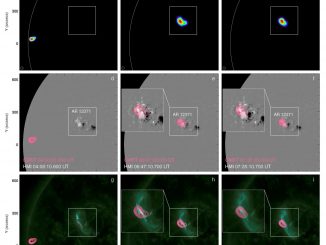A type III radio burst automatic analysis system and statistic results for a half solar cycle with Nançay Decameter Array data
by Zhang et al.*
Type III radio bursts are the most frequent radio bursts observed from the solar corona, which are generated by weakly relativistic electron beams moving outward along open magnetic field lines from solar active regions. According to the classic plasma emission mechanism (Melrose, 1985), the frequency drift rate of type III bursts depends both on the radial velocity of the exciter electrons and on the gradient of the background electron density […]

